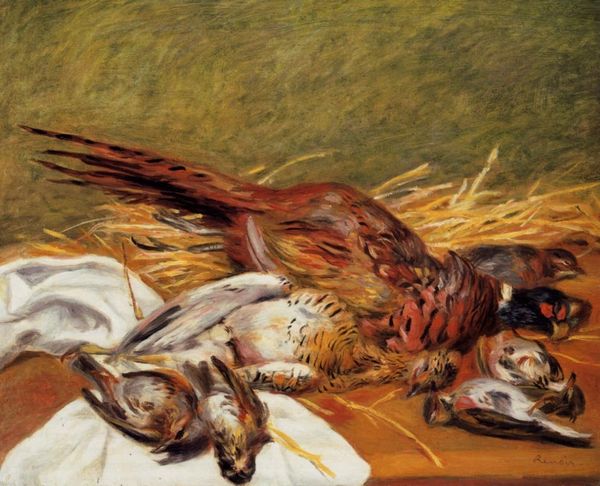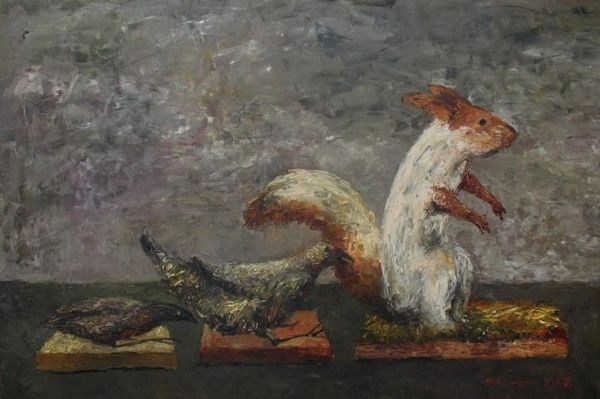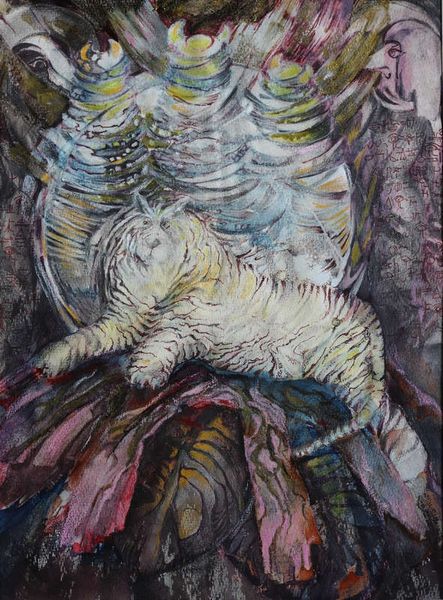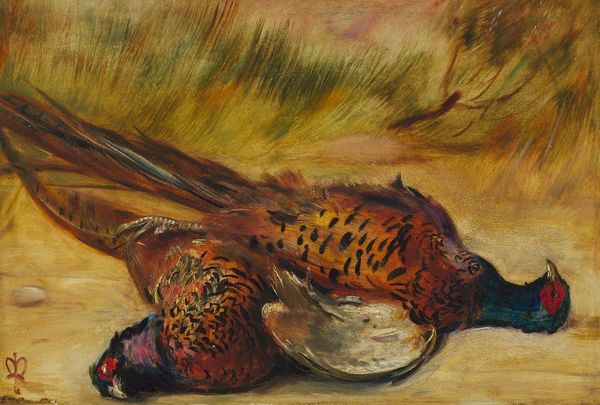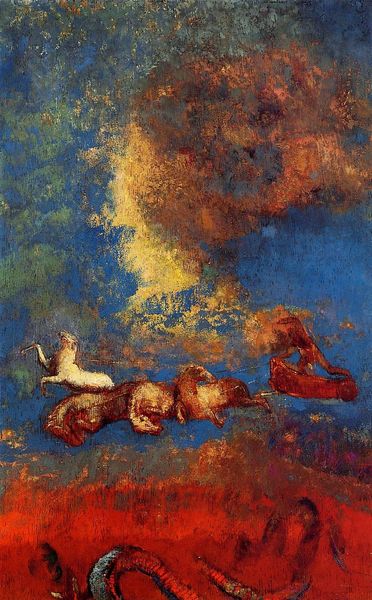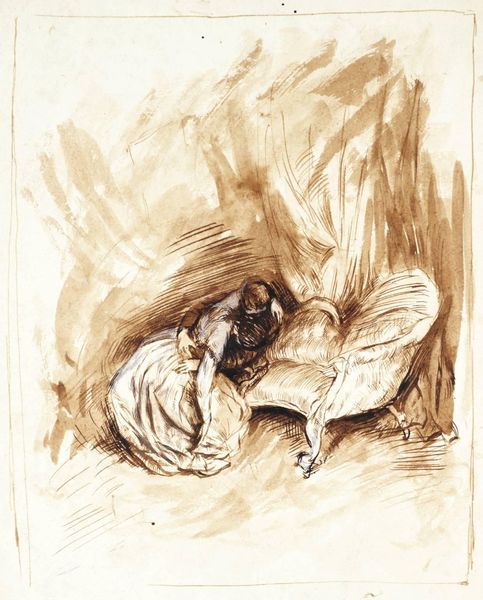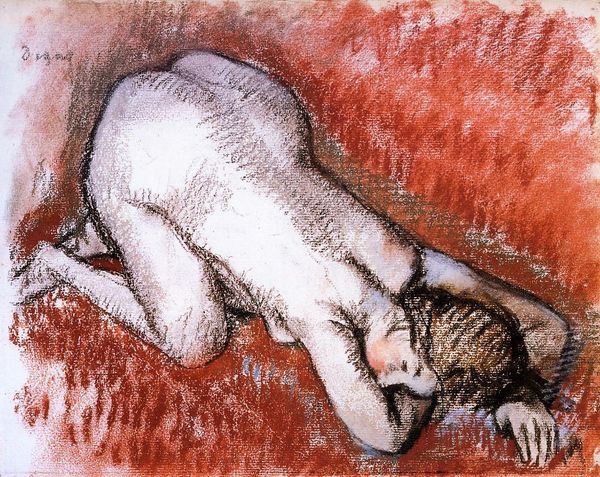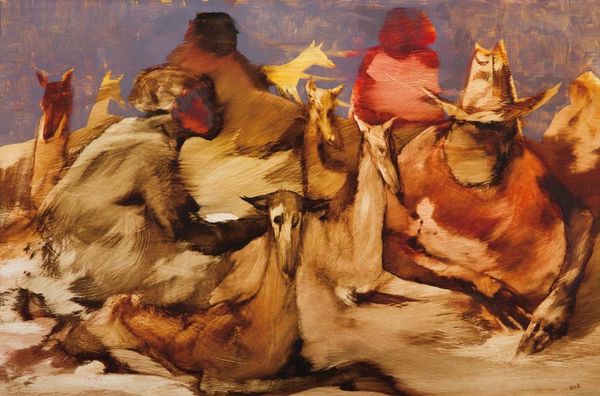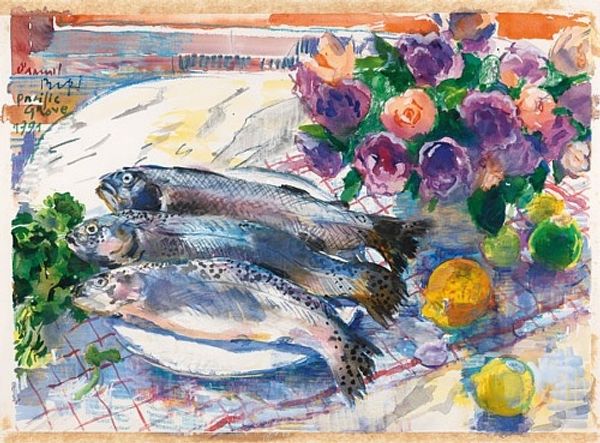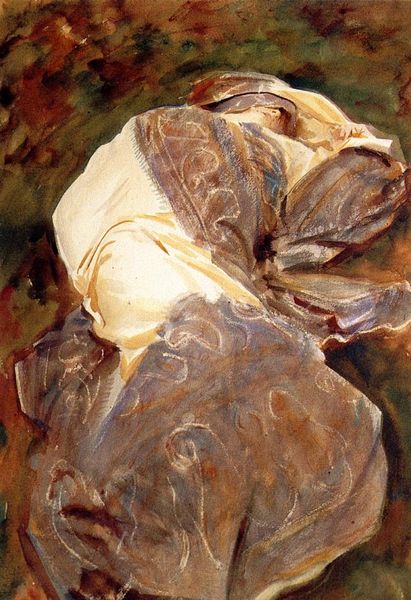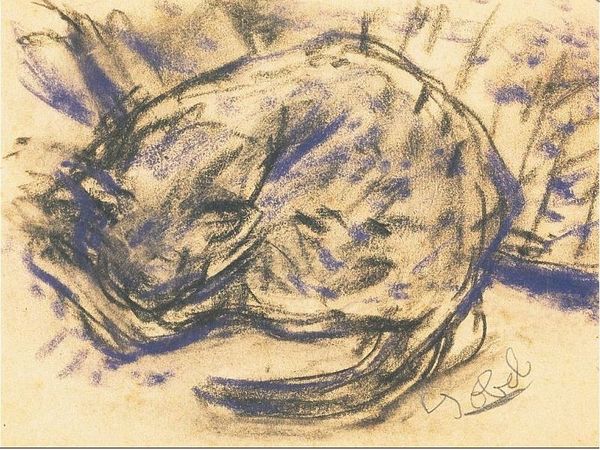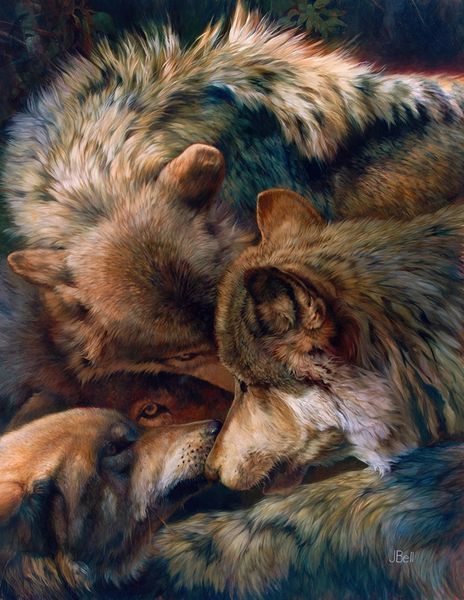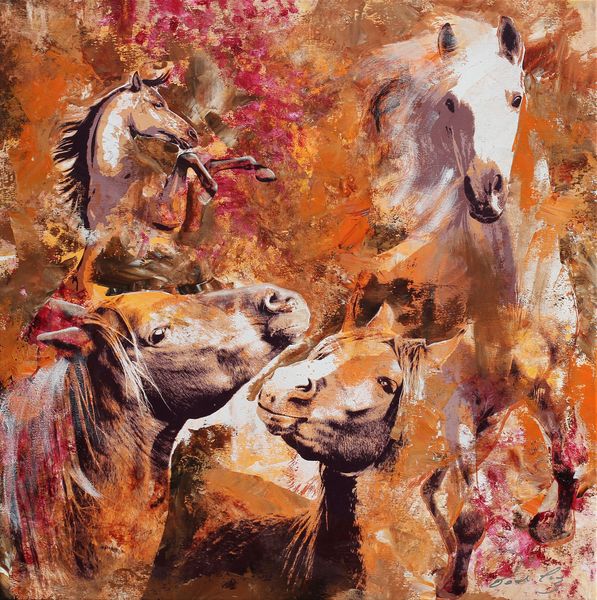
Copyright: Public domain
Editor: Here we have Renoir’s "Three Partridges," painted around 1880, using oil paint. The texture really stands out—it feels almost rough and visceral. I'm struck by how it captures the light on these birds, even in their stillness. What can you tell me about it? Curator: Well, looking at Renoir's choice of subject, we can immediately consider the social context of hunting in 19th-century France. These weren’t factory-farmed birds; they were likely hunted. Renoir, like many Impressionists, engaged with scenes from everyday life. Consider how the handling of paint, the very *materiality* of it, speaks to that. He isn’t just representing dead birds. It’s about how paint *becomes* feathers and flesh through the process. Do you see how the rapid brushstrokes both conceal and reveal the subject matter? Editor: Yes, it's almost like he's less interested in perfect realism and more in the act of painting itself. So, you're saying the subject is actually a means to explore the materials and method? Curator: Precisely. He transforms the conventional still life by emphasizing the constructed nature of the artwork, forcing the viewer to contemplate the labor and decisions involved in its production, questioning what’s being consumed beyond just the birds on the table. Editor: That makes me see it in a totally new light! I was initially drawn to the colours, but now I am considering how the artistic choices are deeply connected to the society of the time. Curator: Exactly. It's a fascinating intersection of subject, skill, and socio-economic forces.
Comments
No comments
Be the first to comment and join the conversation on the ultimate creative platform.
